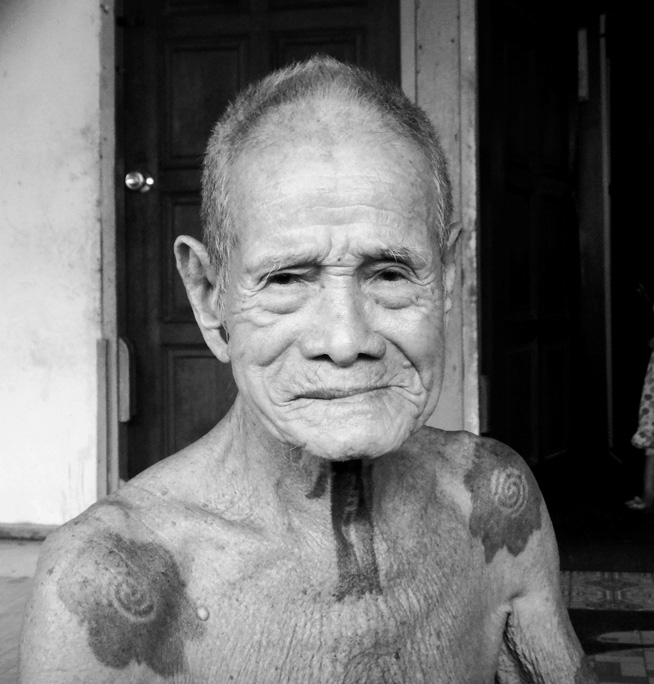Tattoos: Borneo

Guest blog by Chris Darling, Senior Curator of Entomology.
The ROM is guided by a dual mandate, “The Arts of Man Through all the Years” and “The Record of Nature Through Countless Ages.” Many major museums were similarly comprehensive when established because they were broadly interested in all manifestations of the natural world, including human cultures. These museums were built by true explorers who spent time working and living in their regions of interest. Permanent skin markings fascinated these explorers. The modern word “tattoo” derives from the Polynesian tatau and was introduced to Europe by explorers during the Age of Discovery, reaching a wider audience as a result of Captain Cook’s first voyage to the Pacific in 1768.
Borneo seems to have attracted more than its share of polymaths, perhaps because of the extraordinary biological and cultural diversity on the world’s third largest island. Their eclectic studies were encouraged by the Sarawak Museum in Kuching. Established in 1888, former curators were described as “zoologist and ethnographer,” “zoologist and archaeologist,” or “ornithologist, explorer, archaeologist, and anthropologist.” Trained as naturalists and biologists, their fieldwork in Borneo was dependent on the support and cooperation of the Dayak communities. Living among the people, they were able to observe and record all aspects of life in Borneo. They too were captivated by the tattooing traditions which had flourished in splendid isolation for millennia.
The seminal work on tattooing in Borneo was the result of a collaboration between Charles Hose, an enlightened British colonial administrator who was a zoologist and ethnologist, and Robert Shelford, an entomologist working as the curator of the Sarawak Museum. Together they catalogued the tattoo motifs in Borneo circa 1900, before the arrival of western influences.
ROM biologists conducting fieldwork in Borneo today are fortunate to experience the diverse and vibrant tattoo traditions. Many of our guides, porters, and assistants are tattooed, and come from communities with complex tattoo traditions. Borneo’s tattoo motifs are not static, but are constantly changing as young people move to the cities, returning with new interpretations of traditional motifs with western-inspired designs.
After working in Borneo for over 25 years, like the earlier explorers, tattoos have also got under my skin!
How To See It: Tattoos: Ritual. Identity. Obsession. Art. runs until September 5, 2016.
